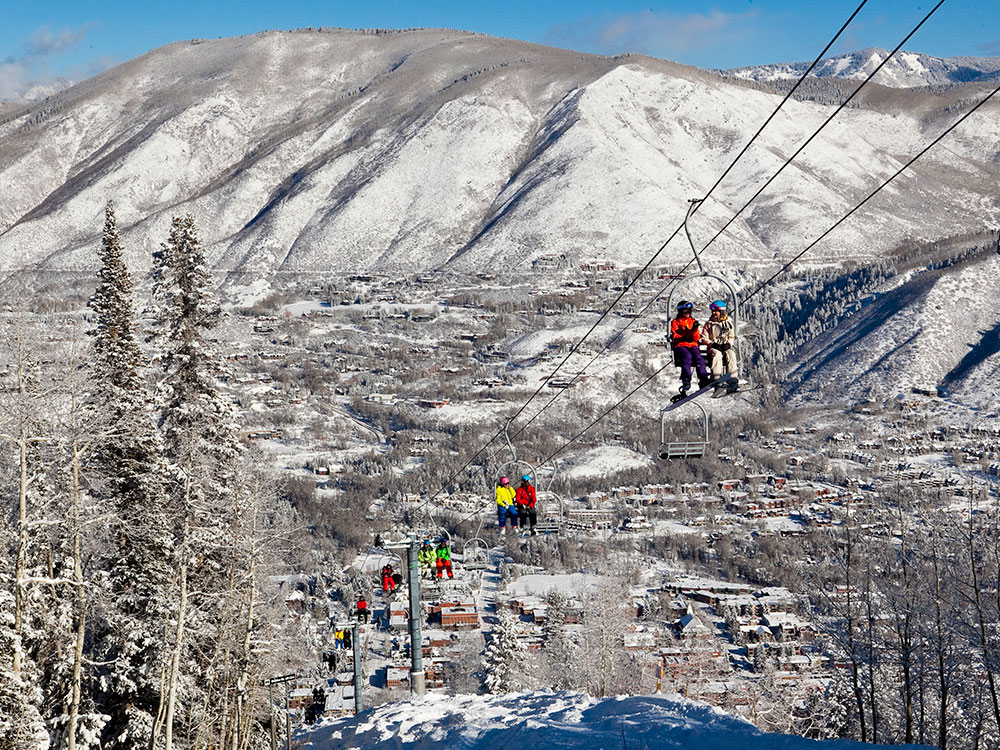Aspen
Carbondale, 29 mi
Glenwood Springs, 41 mi
From Denver (198 mi):
Overview
Home to Vail Ski Resort, the largest ski mountain in Colorado, Vail is known for its hotels, dining, and for the numerous events the city hosts annually, such as the Vail Film Festival, Vail Resorts Snow Days, and Bravo! Vail.
Vail was incorporated in 1966, four years after the opening of Vail Ski Resort. The ski area was founded by Pete Seibert and local rancher Earl Eaton in 1962, at the base of Vail Pass. The pass was named after Charles Vail, the highway engineer who routed U.S. Highway 6 through the Eagle Valley in 1940, which eventually became Interstate 70.
In December 1962, Vail officially opened for its first season. It operated a gondola lift and two ski lifts on the mountain owned by the United States Forest Service. The village was established at the base of the mountain for local residents and offered lodging for visitors. It quickly grew throughout the valley, with housing added first in East Vail and then West Vail, and additional lodging added in Lionshead in the late 1960s.
Within the first year, the village had a ski shop, a ski boutique, a hotel and restaurant. By 1969, Vail was the most popular ski resort in the state. In 1988 Vail opened China Bowl, making Vail the third largest ski area in North America.
Vail Mountain
Vail Mountain rises from 8,120 feet (2,470 m) to 11,570 feet (3,530 m), giving a vertical rise of 3,450 feet (1,050 m). It has a 5,289 acres (2,140 ha) skiable area, 33 ski lifts, 193 marked skiing trails on three faces: the front side, the back bowls, and Blue Sky Basin. The seven back bowls are Sun Down Bowl, Sun Up Bowl, Teacup Bowl, China Bowl, Siberia Bowl, Inner Mongolia Bowl, and Outer Mongolia Bowl. Blue Sky Basin includes Pete's Bowl and Earl's Bowl. The mountain resort also includes 17 miles of recreation paths, botanical gardens, and an outdoor amphitheater.
The Vail economy relies heavily on tourism. The main attraction in Vail is winter sports such as skiing and snowboarding on the mountain, in addition to snowmobiling and snowshoeing, among many other winter sports. Vail is also a summer resort and golfing center. Summer activities include guided hikes, mountain biking, horseback riding, carriage rides and fishing. Vail is also developing as a cultural center, with various art and music venues active throughout the summer. The town has a developed culinary center, with a variety of restaurants.
Interstate 70 runs east-west through the middle of Vail and is the only road to or from Vail, with exits at East Vail, at the base of Vail Pass, the town of Vail, and West Vail. From the east, the highway comes from Denver, 97 miles (156 km) away, passes through Eisenhower Tunnel and over the Continental Divide, by-passing Loveland Pass, and over Vail Pass, dropping down into Vail Valley.
This article uses material from the Wikipedia article "Vail Ski Resort", which is released under the Creative Commons Attribution-Share-Alike License 3.0
